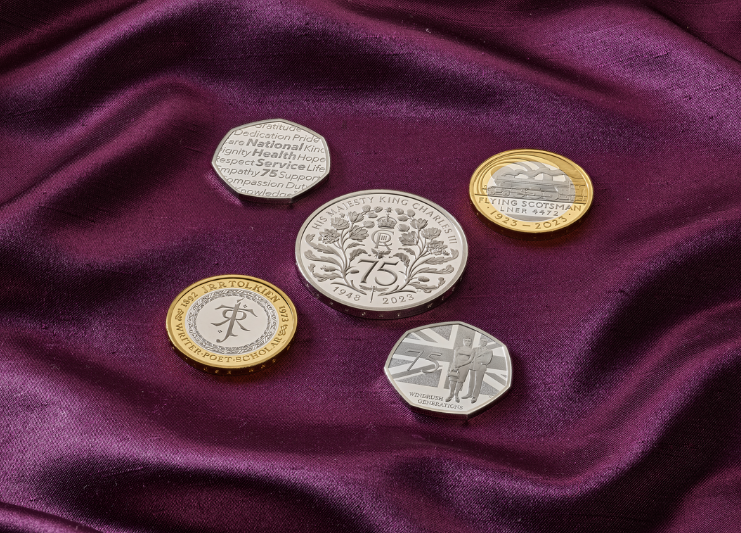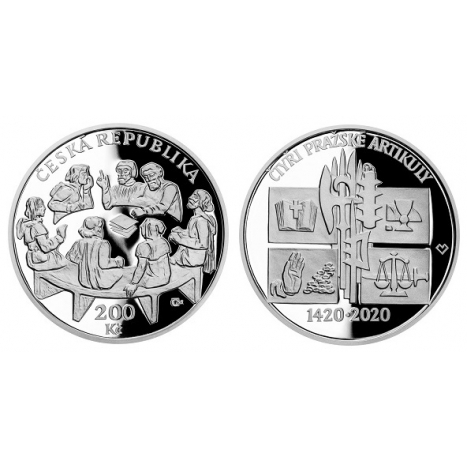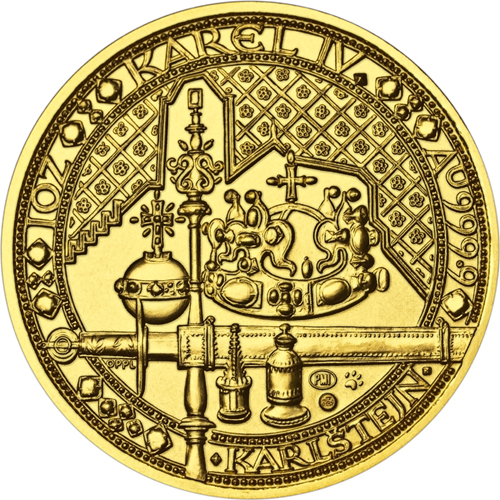Great Facts For Numbering Czechoslovakia Medals
Wiki Article
How And Why Is The Model Of A Plaster Scanned In Order To Make A Digital 3d Model For Gold Coins And Medals?
The process employs specially designed equipment to digitize a maquette and capture its dimensions. This digital copy can be used for a variety of uses during production.
3D Scanning Technology - High-resolution 3D scanners are utilized to capture the physical dimensions and details of the plaster model. The scanners use a variety of techniques to take exact measurements.
Capturing Surface Information- The scanner projects light or laser beams on the surface of the plaster model. The scanner records these distortions and reflections. This information is then used to create models.
Data collection- The scanner collects data as it moves across the plaster model. This results in an image that is digitally rendered, which includes the contours of the model, its geometry and other details.
Conversion into a 3D Model. The collected data is processed by special software which reconstructs it into a 3D digital version. The model is based on the physical dimensions and features of the maquette.
The Reasons to Create the Digital 3D Model
Digital 3D Models permit accurate reproduction of the physical model's details and dimensions. This accuracy will ensure that final gold coins and medals are created to be in line with the intended design.
Digital models are easily modified and refined. Designers can make adjustments to the 3D model without changing the original plaster maquette making it possible to make improvements or corrections over time.
Compatible with Manufacturing Processes- Digital 3D models are compatible with various manufacturing technologies, such as 3D printing or CNC machining and enables the creation of molds or dies that are suitable for mass production.
Digital 3D model archives and documentation- Digital models are preserved as records of design. Digitally stored 3D models may be used in the future for references, reproductions or for historical documentation.
By scanning the model and then creating digital 3D models that designers and manufacturers can improve the efficiency of their production, ensure accuracy in replication, and leverage advanced manufacturing techniques to create gold coins and medals with a high degree of precision and fidelity to the original concept. Follow the best Scanning and 3D Modeling Prague Mint gold coins website advice. including 1 0z gold, krugerrand, 20 dollar gold coin, gold biscuit buy, cost of gold coins, buy gold coins near me, gold medals, oz gold bars, gold coin values, price for one ounce of gold and more.

What Is The Process By Which A Janvier Machine Transfer A Gold Medal Or Gold Coin From The Master Hub To A Functioning Hub?
The Janvier machine (also called pantographs or reduction machines) is a specific device that allows the transfer of the design of a medal or coin from the master hub onto the working hub. Here's a brief overview of the process it uses to accomplish this Master Hub Creation-
The master hub, also known as the original die or mold, is the original mold or die which contains the exact layout and design of the coin. It is made using CNC machineries, or other methods of precision.
Janvier Machine Setup
The Janvier Machine is comprised of two parts that include a stylus for drawing the design, and a tool which cuts the design.
The Janvier machine is equipped with an incredibly secure master hub. This is used as a base from where the design is transferred.
The Design-
The Janvier stylus is a perfect match for the design's contours as well as the details on the master hub. As the stylus moves across the hub's surface, it tracks its contours.
Reduce the Design
In parallel, the cutting tool of the Janvier machine copies the pattern traced on the working hub which is composed of softer materials than the master hub, such as nickel or steel.
The cutting device cuts or replicates the design on the hub of the working wheel, but at a lower scale or size in comparison to the hub that is the master hub. This reduction in size is essential to the production of medals and coins making them possible to strike with the desired dimensions.
Precision and Accuracy
The Janvier machine works with precision to ensure an exact transfer of the layout from the master hub to the operating hub. It faithfully recreates the tiny details and contours.
Quality Control
The final working hub undergoes quality tests to make sure it meets the specifications for striking and is exact.
Further Processing
The hub of the Janvier's can be used as an instrument for the making of coins and medals. It's used as a mold or die to create a variety of empty medals or coins with the transferred design.
The Janvier machine's purpose is essential in the process of minting, enabling the replication and reduction of intricate coin or medal designs from master hubs to working hubs with precision. These hubs are utilized to create large amounts of medals and coins by through the strike method. Check out the recommended janvier processing Czechoslovakia gold medals blog examples. including one ounce of gold, gold medal gymnasts, 1936 olympics jesse owens, krugerrand gold coin, gold panda coin, 5 cent piece, 1oz of gold, golden dime, spanish gold coins, 1936 olympics jesse owens and more.

Why And How Are Certain Types Of Finishes, Textures Or Textured Surfaces Made By Sandblasting?
Sandblasting is an effective technique to create rough or matte surfaces on silver or gold coin and medals. What is the reason and how do we use this method?
Surface Preparation - The coin or medal is put inside a cabinet, chamber or nozzle that is connected to an air compressor. The chamber is typically enclosed to contain the abrasive materials used to prepare the surface.
Abrasive Material Select- Abrasive particles such as glass beads, aluminum oxide, silica carbide and sand are launched at high speed onto the surface.
High-Pressure propulsion: Abrasive particles are hurled onto the surface of the surface by with compressed gas or a different high pressure system. The force and speed at the point at which particles are thrown on the surface will determine the finish or texture.
Texture Creation: The impact of the abrasive particles on the surface produces a matted or textured look by changing the topography of the surface. The process may be used to selectively roughen specific areas or produce a consistent texture throughout all surfaces.
Controlled Application – Sandblasting's intensity, duration, and angles of application can all be adjusted to create a variety of designs or textures. Different pressure levels and abrasives yield different results.
Sandblasting is used for many reasons
Texture Variation - Sandblasting creates many different textures, which include the grainy, matte and frosted surfaces. They add visual attraction and distinctive characteristics to the medals or coins.
Aesthetics Enhancement - Sandblasting may change the surface's appearance, diffuse light reflection, and even reduce shine. This can enhance the appearance of the medal or coin's aesthetic appeal. Surfaces that are matte, like ones that cut down on glare can highlight specific design details.
Anti-Glare Property - Sandblasting produces smooth or matte surfaces that reduce glare, reflections and makes the item more appealing.
Contrasting Design Elements- Sandblasting creates contrast between textured and polished areas of the medal or coin, emphasizing specific design features or creating depth and dimension.
Sandblasting permits customization, which includes artistic expression and the creation of unique coins or medals that have textures or finishes customized to meet specific design requirements.
Sandblasting is a technique used to create various surface textures or finishes on gold coins or medals. This technique contributes to the aesthetics and visual appeal of these objects. Follow the recommended sandblasting Prague Mint gold coins site recommendations. including bullion bars gold, gold bullion bars, cost of 1 oz of gold, coin 1, gold dollar coin, twenty dollar gold coin, 2000 p sacagawea dollar, coin gold bullion, bullion bars gold, gold bullion price and more.

How Do Gold Coins And Medals Get Their Vintage Or Antique Look?
Gold coins and medals can undergo processes to produce an aged or antique look for various reasons, including aesthetics and historical significance or even collector demand. This is the way and how it's done.
Chemical Patination: Chemical treatments that use acids or a patina-inducing solutions are applied to the surface. These solutions are used to create a controlled degree of oxidation or tone that gives the look of an old or vintage coin. This process can enhance details and give depth to the design.
Artificial Aging. Mechanical and chemical methods are employed to replicate natural oxidation. The use of abrasive tools or treatments may be employed to cause scratches, scuffs or worn-out areas, which give the coin or medal an aged appearance.
Toning and Staining: Specific solutions, or heating treatments are employed to stain or tone the surface. This results in a variety of hues or shades. This process can replicate the discoloration and toning and fade that occurs naturally in the course of time.
Techniques for polishing and buffing The areas that are selected for buffing or polished to eliminate the surface layer and highlight. This produces contrast and gives the appearance of wear and aging.
Why should you create an antique appearance
The vintage look is appealing to some collectors and fans. The worn appearance provides depth and character the design. It's visually stunning.
Historical or Commemorative Meaning- Coins, medals or other items of commemoration that honor historical events or periods can be aged to provide them with a authenticity that is historical. They may be also aged to mimic coins from certain times.
Antique coins and medals are more collectible. Collectors who seek out unique or limited edition pieces often prefer antiqued coins or tokens. The appearance of aging can increase the value of their collectibles and appeal to buyers.
Highlighting Design Details- Aging processes can emphasize the intricate details of a design by creating contrast between raised and recessed areas, making the design components more noticeable and noticeable.
Minting authorities who are artistic may use aging methods to express their artistic vision. They may add depth to the artwork and tell a story or incorporate symbolism.
An intentional choice in art to create an antique finish on gold-plated coins or medals may bring back memories or increase visual interest. It also can give a sense of historical significance. It is important to preserve the authenticity of the coin and its intrinsic value while preserving an appealing appearance. Read the best antique finish of Prague Mint gold coins blog examples. including ancient coin, chinese coins, st gaudens double eagle, gold and coin dealers near me, $50 gold piece, silver nickel, spanish gold coins, gold biscuit buy, sacagawea gold dollar, gold eagle coin and more.
